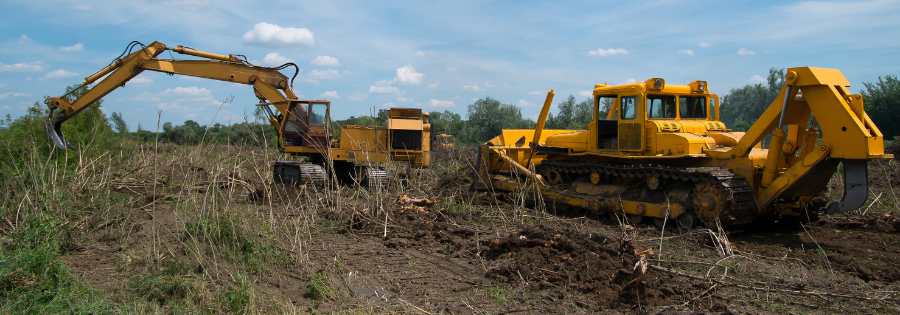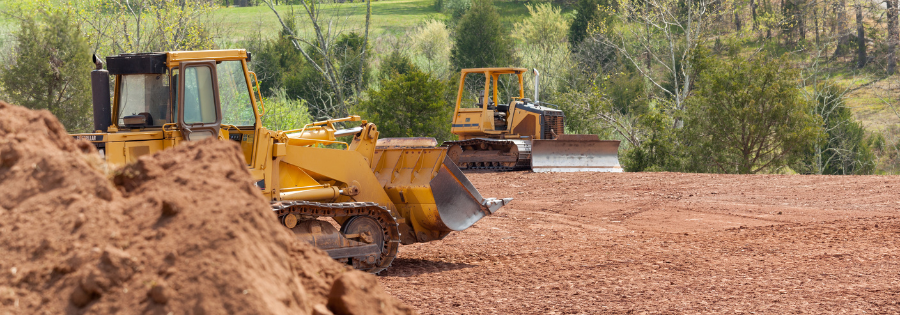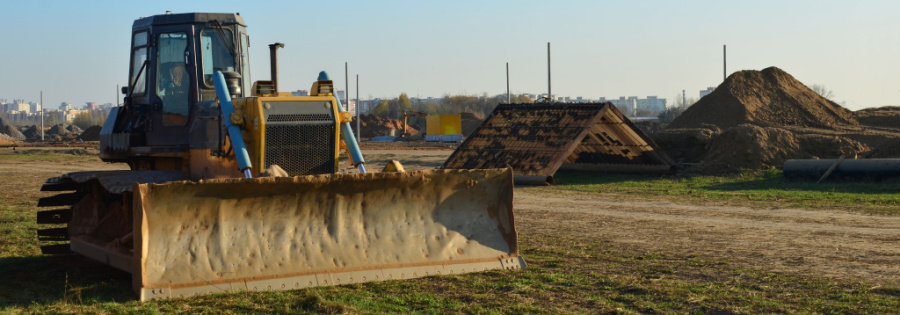Construction Site Clearing Best Practices

Getting a construction site ready is the first step in preparing for any building project. Whether you’re working on a home, business, or industrial project, how you clear the site is crucial for success.
What is Construction Site Clearing?
Construction site clearing is the essential process of preparing a piece of land for construction or development by removing vegetation, debris, and other obstacles. This initial step ensures that the construction site is safe, clean, and ready for the building or development work to begin.
Common construction site clearing equipment includes bulldozers, excavators, backhoes, brush cutters and mulchers, chainsaws, and front-end loaders. Of course, the specific tools and machinery required will depend on the site’s size, terrain, and environmental considerations.
Why Proper Site Clearing is Essential
Not properly clearing a construction site before starting a project can lead to various consequences, including:
- Safety Hazards: Debris, rocks, and overgrown vegetation can pose safety hazards to workers and equipment. These obstacles may lead to accidents, injuries, or damage to machinery.
- Project Delays: Incomplete clearing may cause delays in construction as workers and equipment must navigate around obstructions. This can extend the project timeline and increase costs.
- Poor Foundation: Inadequate clearing can result in an unstable or uneven foundation for buildings and infrastructure, compromising the project’s structural integrity.
- Aesthetics and Functionality: Poor commercial land clearing can affect the overall appearance and functionality of the project, impacting its long-term value and usability.
- Environmental Impact: Failing to address environmental concerns such as protected species or wetlands can lead to legal and regulatory issues. It may result in fines and damage to the ecosystem.
- Legal Issues: Non-compliance with local regulations and permits can result in legal complications and the halting of construction until issues are resolved.

Construction Site Clearing Methods & Best Practices
Land clearing companies like Coastal Spray are a great option for preparing construction sites quickly and efficiently. They use methods like manual clearing, using machines, controlling vegetation with chemicals, and other specialized techniques.
Manual Site Clearing
Hand Tools and Equipment – Manual site clearing involves the use of hand tools such as shovels, rakes, and machetes. It’s a labor-intensive method suitable for smaller projects or areas with limited access to heavy machinery.
Debris Removal – Debris like rocks, roots, and small obstructions are manually collected and removed from the site.
Selective Vegetation Removal – This method allows for selective removal of specific plants or trees, preserving desirable vegetation while clearing unwanted growth.
Mechanical Site Clearing
Bulldozers and Excavators – Heavy machinery, such as bulldozers and excavators, is employed to quickly clear large areas. These machines can push over trees, level the ground, and remove obstacles efficiently.
Grading and Leveling – In addition to right-of-way clearing, bulldozers and excavators can grade and level the terrain, ensuring it’s suitable for construction.
Large-Scale Debris Removal – Mechanical clearing is highly effective for removing large debris like tree stumps and rocks.

Chemical Site Clearing
Vegetation Control – Chemicals are used for vegetation clearance in a systematic manner. This method is often employed to prepare sites with dense, unwanted plant growth.
Environmental Considerations – It’s important to assess the environmental impact of chemical clearing, ensuring it complies with regulations and minimizes harm to surrounding ecosystems.
Invasive Species Eradication – Chemicals can be applied to eradicate invasive plant species that might harm the ecosystem.
Controlled Burning
Safely Removing Vegetation – Controlled burns are conducted to remove vegetation by setting it on fire under carefully managed conditions. This method can be useful in areas prone to wildfires as it reduces potential fuel.
Environmental Impact Assessment – It’s critical to conduct an environmental impact assessment to ensure the controlled burn doesn’t harm local wildlife or ecosystems.
Eliminating Pest Habitats – Controlled burns can help eliminate habitats for pests and insects that might interfere with construction. Learn more about construction site pest control methods.
Site Clearing for Specialized Projects
Wetland Site Clearing – Wetlands often have unique clearing requirements due to their environmental sensitivity. Specialized equipment and techniques are employed to clear wetland sites while preserving the ecosystem.
Hazardous Material Removal – In cases where hazardous materials (like asbestos or contaminated soil) are present on the site, specialized clearing methods are used to remove these materials safely while protecting worker health and the environment.
Coastal Spray Land Clearing Services
If you’re in need of professional brush removal and land clearing services, don’t hesitate to contact Coastal Spray. Our experienced team is ready to assist you in preparing your construction site for a seamless building journey.
Contact our team today for more information!